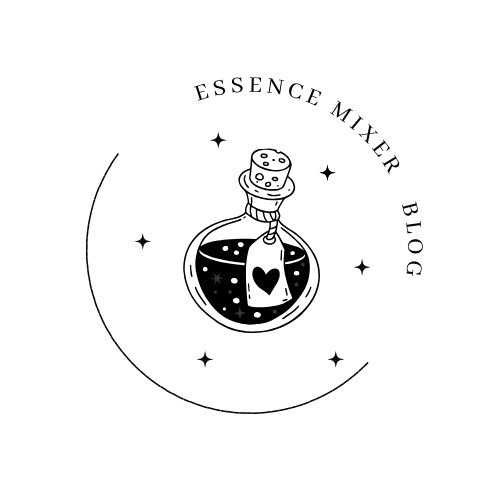To balance fragrance wheel notes like a pro, start by following the 30-50-20 rule: 30% top notes, 50% middle notes, and 20% base notes. Pair complementary scent families using the wheel as your guide, matching warm ambers with fresh scents or florals with woody notes. Test combinations on your skin to evaluate how they evolve, and document the interactions. Let scents fully dry down before making adjustments. The art of perfect note harmony awaits your exploration.
Understanding Top, Middle, and Base Note Harmony

When creating a balanced fragrance, understanding the interplay between different scent layers is essential.
You'll find that top notes introduce your fragrance composition with volatile scents that quickly evaporate within 15 minutes, setting the stage for what's to come.
The middle notes then take center stage, featuring floral notes and spices that create the heart of your scent profile.
These notes maintain their presence for several hours, bridging the gap between first impressions and lasting memory.
Your base notes, often consisting of woody notes and musks, provide the foundation that anchors your harmonious fragrance.
They'll linger the longest, ensuring your olfactory experience remains compelling throughout the day.
When you balance these three layers correctly, you'll create a dynamic fragrance that tells a complete story from start to finish.
Selecting Complementary Scent Families
To create truly enchanting fragrances, you'll need to master the art of combining complementary scent families. The fragrance wheel serves as your guide, showing you how to pair scents that sit opposite each other for perfect balancing fragrance combinations.
When you're experimenting with the opposite fragrance technique, try pairing warm Amber with crisp Fresh scents to create an intriguing contrast that highlights both elements.
Another winning combination is matching a soft Floral scent with a robust Woody scent, allowing the earthiness to ground the delicate floral notes. These pairings create unique fragrances that are both complex and harmonious.
Don't be afraid to explore different combinations across the wheel – you'll discover unexpected blends that suit your personal preferences while creating multidimensional scents that truly stand out.
Mastering the Art of Note Proportions

Mastering fragrance proportions requires a deep understanding of the 30-50-20 rule, which serves as your foundation for creating well-balanced scents.
When crafting your harmonious blend, you'll want to balance the intensity of each note while considering their placement on the fragrance wheel.
- Top notes make up 30% of your composition, providing that vital first impression
- Middle notes comprise 50%, defining your fragrance's core character
- Base notes account for 20%, delivering depth and staying power
Start by exploring kindred notes that share similar characteristics, then introduce complementary notes to create contrasting elements.
You'll find that combining lighter scents with deeper ones creates a well-rounded fragrance.
Creating Lasting Fragrance Transitions
Building upon your understanding of note proportions, the art of creating enduring scent progressions demands careful attention to both composition and timing.
To achieve a lasting impression, start with a strong base note like sandalwood or vanilla that'll anchor your fragrance. You'll want to master layering techniques by applying lighter top notes before heavier ones, allowing for natural shifts throughout wear.
Consider the fragrance wheel and fragrance classification system when selecting complementary notes. Scents from adjacent fragrance families blend seamlessly, creating fluid progressions.
Pay close attention to your skin chemistry, as it greatly influences how fragrances evolve. Test combinations on your skin before committing to confirm the notes complement each other effectively.
This thoughtful approach to shifts and composition will help you craft sophisticated, long-lasting fragrance combinations that unfold beautifully over time.
Testing and Adjusting Note Combinations

When exploring new fragrance combinations, start by testing scents from the same or adjacent fragrance wheel families to understand how they interact.
You'll want to document how these notes blend well together and how your body chemistry affects their evolution.
- Test complementary notes from opposite fragrance families to create unexpected and sophisticated contrasts.
- Allow adequate time for the full dry-down period to evaluate how scents develop on your skin.
- Keep detailed records of strengths and weaknesses in each combination.
When adjusting your combinations, focus on achieving the right balance between top, middle, and base notes.
Don't let any single note overpower the others.
Frequently Asked Questions
What Is the 30 50 20 Rule for Perfume?
You'll want to blend your perfume using 30% top notes for initial impact, 50% middle notes for the main character, and 20% base notes for lasting power. This creates a balanced fragrance composition.
How to Balance Perfume Notes?
You'll need to blend top, middle, and base notes in a 30-50-20 ratio. Choose complementary scents from the fragrance wheel, test on your skin, and verify notes harmonize while maintaining your desired scent family.
How Do You Match Fragrance Notes?
You'll match fragrance notes best by starting with your favorite scent family. Explore adjacent notes for harmony, try opposite families for contrast, and combine three complementary subfamilies for a well-balanced, complex blend.
What Fragrance Notes Go Together?
You'll find that floral pairs beautifully with woody notes, fresh blends well with citrus, amber complements gourmand, spicy harmonizes with woody, and aromatic works perfectly with green notes in your fragrances.
In Summary
You're now equipped to create beautifully balanced fragrances by understanding the delicate interplay between top, middle, and base notes. Remember to trust your nose while following these expert guidelines for combining scent families and proportions. Don't be afraid to experiment – start with small batches, test your combinations thoroughly, and make adjustments until you've achieved the perfect harmony in your signature scent.





Leave a Reply